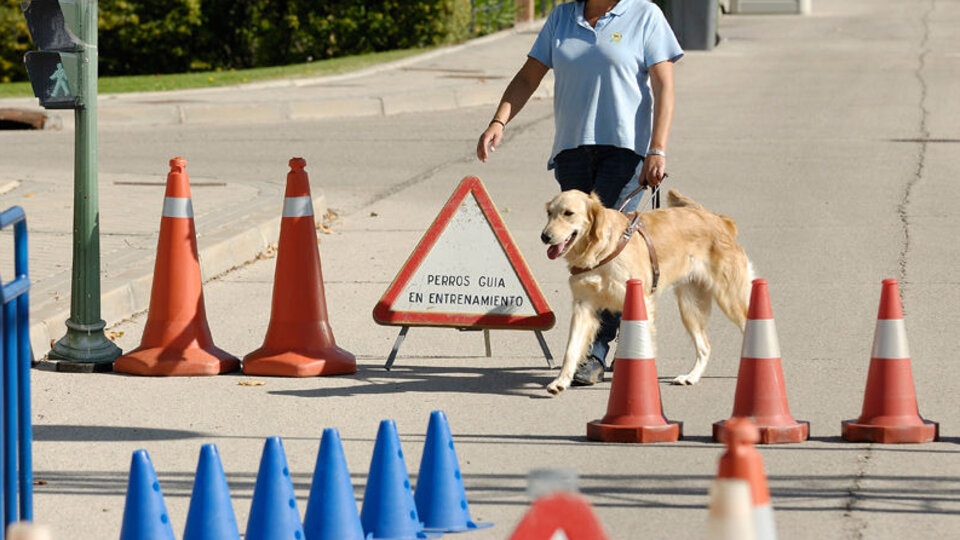Guides and faithful companions, guide dogs are like an extension of the human body that uses them, as they favor the autonomy of people with disabilities or diseases that limit their daily lives.
Assistance dogs for the visually impaired, also called guide dogs or guide dogs, are probably the first that come to mind when talking about this type of animal. But there are also dogs assistance for the hearing impaired, specially trained to identify different sounds (bells, alarms, telephone, alarm clock and baby crying) and take its owner to where it comes from. Another type are the dogs of assistance to people with physical disabilities, prepared to activate or move objects. To these are added assistance dogs for alerts and emergenciestrained to care for people with illnesses such as diabetes or epilepsy, and ask for help if needed.
For people with autism, assistance dogs are therapy dogs. able to avoid or reduce stressful behaviors and establish a very strong affective bond with their owners, improving communication, sensory stimulation and safety. Another case is that of dogs for animal-assisted therapy (AAT)used for therapeutic purposes in people with intellectual disabilities or psychological disorders.
How are they chosen and trained?
While being a service dog does not look for a specific breed, it is recommended that it be docile, gentle, affectionate and predictable in nature.
“The training of an assistance dog is preceded by the selection of the animal, according to its temperament, that is, the genetic load it has, which goes beyond the breed and has to do with the service it intends to provide”, he explains. for the UNQ science news agency The veterinarian Juan Enrique Romero. And he maintains that “in service dogs for motor disabilities, the Labrador breed, due to its height and physical characteristics, which allow it to adapt easily to the demands”. However, he clarifies that in general terms, “although this breed is used, you are also looking for a dog that is easy to maintain and has intermediate intellectual capacity, and that can be easily motivated. In that regard, a crossbred dog can also be selected, although it is more difficult to standardize their characteristics”.
The training of assistance and therapy dogs usually takes between 12 and 18 months, although it can last up to two years. In this sense, Romero explains: “The training time for an animal with these characteristics, from fury to 60 days, is from one and a half to two years, depending on the animal and its characteristics. And there is a final period, which would be the period of correspondence or linking with the user, which lasts approximately six months. In other countries, the user is obliged to live with the animal and live with it”.
According to Romero, the training of any of these animals requires, in the first place, a deep socialization and then operant conditioning, that is, regulating their actions to give them a reward in relation to what they want to achieve with them.
In this sense, it ensures that the guide dog or guide dog is very complex due to the multiplicity of requirements that an urban environment can have. Not so much the signal dog and the service dog as the mechanical demands are less.
The law protects them
In Argentina, the Law 26,858 A guide or assistance dog is considered to be one that, after approval in a selection process, satisfactorily completes its training, for monitoring, driving, assistance and warning of people with disabilities and obtains the certificate that proves it. The certificate may be issued by an officially recognized national or international institution or approved by the applying authority. The purpose of this law is to ensure the right of access, walking and permanence in public and private places with public access and public transport services, in their various modalities, to any person with a disability accompanied by a guide or assistance dog.
However, dogs that collaborate to increase people’s quality of life in the physical, cognitive, emotional and social aspects, they are a connection and link with the outside world, a bridge that makes everyday life more pleasant and safe, accompanying those in need .
